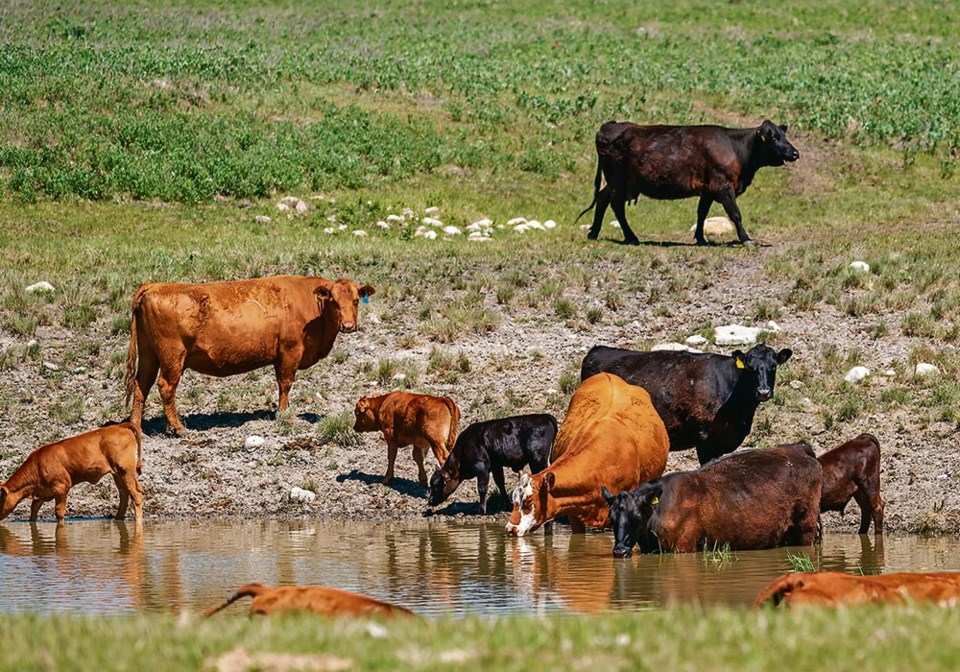A second rural municipality in Alberta has declared an agricultural disaster because of drought this spring as beef producers head into summer, a period typically of less rain.
“We haven’t seen the total effects of the drought,” said Stan Schulmeister, reeve of the County of Paintearth east of Red Deer. “But the agricultural producer that’s strictly dealing with livestock is going to find it very difficult to find feed this year because it’s almost province-wide, the damage to the hay crop and so on.”
Paintearth made the declaration on June 20. The Western Producer asked the Agriculture and Irrigation ministry press secretary Callum Reid for comment, but received no reply.
Despite recent precipitation, the county has dry pockets that have received little rain, resulting in extensive damage to crops, said Schulmeister during an interview June 23.
“We were out this morning with some agronomists and they feel even our better crops, the yields and stuff will be extremely low because the drought damage has already set the yield even though they were far from finished.”
The County of Stettler to the immediate west of Paintearth was the first rural municipality in Alberta to declare an agricultural disaster this year because of drought.
“We’re seeing exceptionally large numbers of livestock being dispersed at auction marts for this time of year, and producers are contacting us to report they are out of feed, cannot afford feed and looking ahead and realizing at this point that the probability of growing feed to support their operations is very, very slim,” said Reeve Larry Clarke in a statement.
It coincidentally rained the day the announcement was made June 14, leading Clarke to joke in an interview June 23 the county should make such declarations more often to encourage precipitation.
“But in a lot of cases, especially with some of the cereal grains, it is definitely an agricultural disaster.”
Rainfall has varied from about 150 millimetres in some parts of the municipality to only two to three mm in others, he said.
“This rain will help our pastures and will help some of the hay crops, but we still have many producers hauling water to pastures because it did nothing for sloughs and creeks and stuff.”
Despite parts of central and northern Alberta recently receiving rainfall that resulted in some flooding after a spring of drought and wildfires, other areas in the province have been missed, said vice-chair Sheila Hillmer of Alberta Beef Producers during an interview June 21.
Getting water for cattle is an obstacle faced by cow-calf producers in drier areas, such as southern Alberta, said Hillmer.
“We are certainly in a challenge and a crisis in my mind on the lack of cow-calf producers already, and to see any more cattle leave the market and likely not come back anytime soon will continue to pressure the feed yards’ ability to produce more beef for the world, sadly.”
Feedlots are increasingly running out of domestic cattle, forcing them to import more cattle primarily from the United States, she said.
“And the cost of freight and all of that is very, very challenging as well, so it continues to just put beef prices at the consumer level into extremely high dollars, even though the profitability through the entire sector in production is limited.”
The national herd, including calves, totalled 11.27 million this year, which is its lowest level since 1990 when it was 11.22 million, said the Canadian Cattle Association, based on figures from Statistics Canada. Alberta provides about 70 percent of the national herd.
The herd could decline even further this year, said Hillmer.
“I think it’s getting if we don’t see the ability for these guys to access feed at a reasonable price and/or water in pastures, they won’t have a choice but to find other options or sell.”
Schulmeister expected there will be herd dispersals because of the dry conditions.
“But at least if we can get some recognition for the dilemma (as outlined in the Paintearth disaster declaration), maybe there’ll be a deferral on the tax on those that do have to sell off their herds because most of them would get back in,” he said.
It could take years to rebuild the cow-calf sector, even if rainfall stays steady at adequate levels, said Hillmer.
“And when feed prices are at an all-time high, and the cost of production is at an all-time high, and even though the cattle market is high right now, it’s extremely volatile, and so there’s just no real consistent outlook to say it’s a good viable industry for people to invest in long term, which is sad, actually.”



